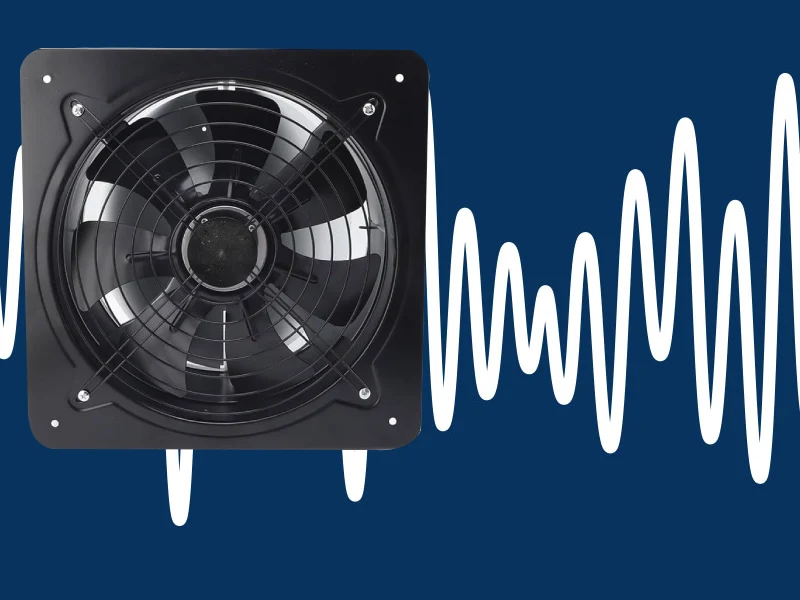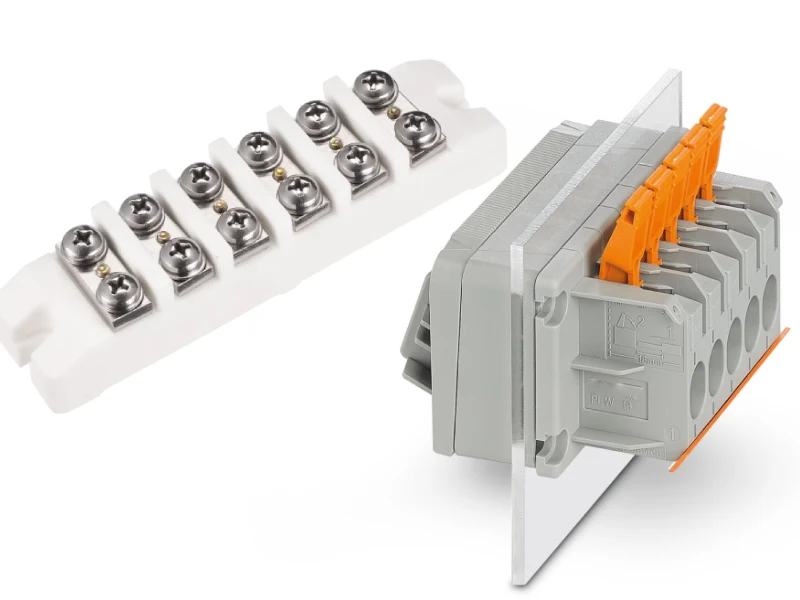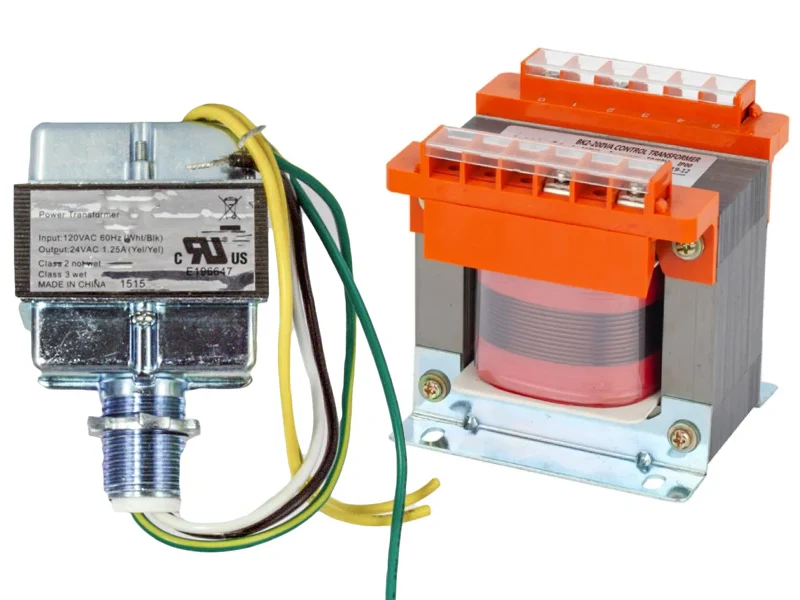When exploring Power Distribution Solutions, you’ll find four main types: radial, network, primary, and secondary systems. Each type serves specific needs. For instance, a radial system is commonly used in a basic electric power distribution panel, while network systems are often found in telecom or energy generation enclosures. Choosing the right Power Distribution Solutions is crucial—selecting the wrong setup can lead to unexpected breaker trips, overheated wires, or even fire hazards within your electrical cabinets.
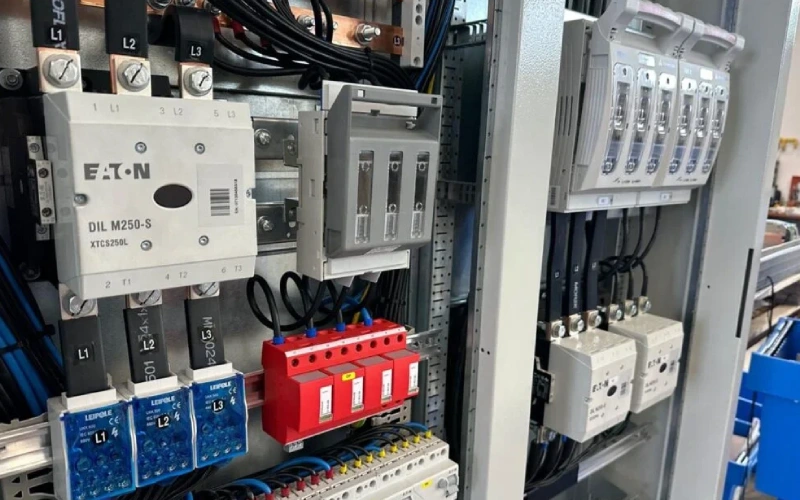
That’s why Linkewell provides electrical power distribution boxes and control panels as part of our comprehensive Power Distribution Solutions, ensuring your system remains safe, efficient, and reliable.
Power Distribution Solutions Key Takeaways
- Power distribution solutions come in four main types: radial, network, primary, and secondary, each designed for specific needs and environments.
- Radial systems offer simple, cost-effective power flow for small setups, while network and composite systems provide higher reliability for critical areas like data centers and telecom hubs.
- Primary distribution handles high-voltage power for large facilities, stepping it down safely, and secondary distribution delivers low-voltage power to homes and businesses.
- Linkewell’s customizable power distribution boxes and control panels ensure safety, efficiency, and easy maintenance across all system types.
- Choosing the right system and using quality products like Linkewell’s helps prevent faults, reduce downtime, and supports future growth and energy efficiency.
Power Distribution Solutions Overview
Main Types
When you look at power distribution solutions, you’ll see several main types. Each one has its own structure and purpose. Here’s a quick comparison to help you understand the differences:
| Distribution System Type | Defining Characteristics | Voltage Levels | Typical Applications | Reliability and Fault Handling | Operational Differences |
|---|---|---|---|---|---|
| Radial System | Simple, star-like; one-way power flow | Medium (5–35 kV), Low (100–240 V) | Rural, residential, low-density | Lower reliability; simple protection | Power flows one way; faults isolate branch |
| Spot Network | Multiple transformers feed one bus | 480Y/277 V | Business districts, hospitals | High reliability; automatic isolation | Multiple feeds; network protectors used |
| Grid Network | Interconnected grid, many feeders | Low voltage | Urban, large cities | Very high reliability; redundancy | Multiple current paths; complex protection |
| Primary Distribution | Medium voltage feeders, tie switches | Medium voltage | Rural, urban, wide areas | Radial or loop; more complex | Power flow can be switched; fault isolation |
| Secondary Distribution | Low voltage from transformers | Low voltage | Residential, commercial | Reliability varies; simple protection | Supplies end customers; topology varies |
You can also see the different types in this chart:
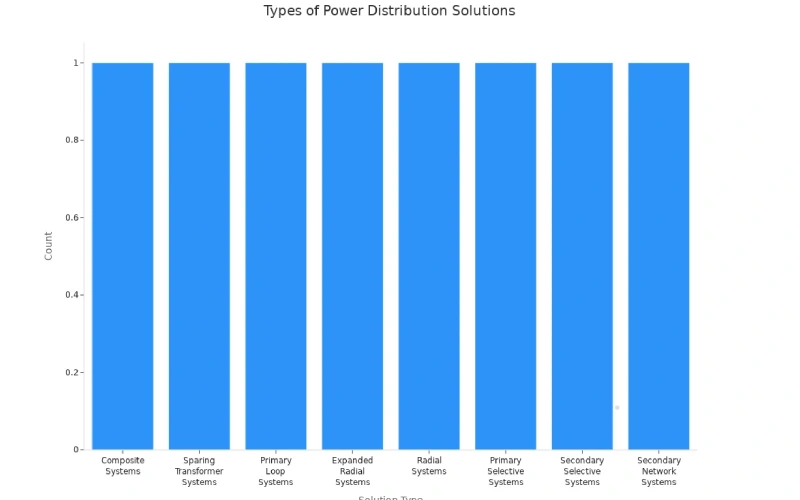
Each system plays a role in electric power distribution and energy transmission. Radial systems are simple and cost-effective. Network systems, like grid or spot networks, offer high reliability for critical areas. Primary and secondary systems help move energy from the main grid to your building or equipment.
Applications in Cabinets and Panels
You use these power distribution solutions in many ways inside cabinets and panels. For example:
- Radial systems often show up in basic electrical power distribution boxes for homes or small businesses.
- Network systems work well in telecom enclosures and data centers, where you need high reliability.
- Primary distribution systems supply power to large industrial panels, while secondary systems handle the final step to your equipment.
Linkewell’s electrical power distribution box and control panel support all these types. You get certified, modular, and customizable solutions that fit your needs. These products help you manage energy distribution safely and efficiently. They also protect your equipment from overloads and short circuits. If you work in telecom, automation, or industrial settings, you’ll find that Linkewell’s solutions keep your power distribution network running smoothly.
Tip: Environmental factors like temperature, humidity, and dust can affect your cabinets and panels. Linkewell designs its products to handle tough conditions, so your electric power distribution stays reliable even in harsh environments.
With the right setup, you can improve safety, reduce downtime, and make future upgrades easier. Linkewell’s products help you get the most out of your power distribution solutions, whether you’re managing a small panel or a complex energy distribution system.
Power Distribution Network Types
Radial Systems
When you look at a radial power distribution network, you’ll notice its simple, tree-like structure. Power flows from a single main switchboard out to different branches, just like the limbs of a tree. This setup makes installation straightforward and keeps costs low. Here’s a quick table to help you see the main points:
| Aspect | Radial System Highlights |
|---|---|
| Structure | One main switchboard, feeders radiate outward |
| Cost | Lower upfront cost, fewer switches |
| Reliability | Lower, since a single fault can cut off a branch |
| Maintenance | Simple, but fault repair can take longer |
You’ll often find this type of power distribution network in smaller factories, rural areas, or basic control panels. If you need a simple solution for a telecom cabinet or a small industrial panel, Linkewell’s electrical power distribution box fits perfectly. You get easy installation and reliable protection for your circuits.
Note: Radial systems work best when you want simplicity and don’t need a lot of backup paths for power.
Network Systems
Network systems, sometimes called ring or mesh networks, take things up a notch. These power distribution networks connect multiple sources and paths, so if one line fails, power can reroute through another. This design boosts reliability and keeps your equipment running, even during faults.
You’ll see network systems in places where uptime is critical, like data centers or large telecom enclosures. These environments demand flexibility, scalability, and energy efficiency. Modern network systems use overhead busways and intelligent power management to make changes easy and keep everything running smoothly. Linkewell’s control panels and cable management solutions help you organize and protect these complex setups, making sure your power distribution network stays efficient and safe.
- Key benefits:
- Power reroutes during faults
- Supports high-density equipment
- Reduces downtime and improves airflow
Composite Systems
Composite systems combine features from both radial and network designs. Sometimes called compound radial or ring systems, they use multiple busbars and sub-switchboards. This approach lets you isolate faults to just one section, so the rest of your power distribution network keeps working.
You might choose a composite system for a large industrial site or a telecom hub that needs both reliability and cost control. Linkewell’s customizable distribution boxes and panels adapt to these hybrid setups. You can tailor the internal layout, add extra protection, and keep your operations running with minimal disruption.
Tip: Composite systems give you a balance between cost and reliability. They’re a smart choice when you want to avoid full network complexity but still need some backup.
Primary Distribution Systems
Features and Uses
When you step into a large factory, a data center, or a big commercial building, you’ll find that primary distribution systems keep everything running smoothly. These systems take high-voltage electricity from the grid and step it down to safer, usable levels. You usually see voltage levels between 11 kV and 33 kV in these setups. After stepping down, the power gets distributed to different parts of your facility.
Here’s what you’ll notice about primary distribution systems:
- They handle voltages up to 35 kV, which is much higher than what you use at home.
- Transformers in these systems often range from a few hundred kVA up to 5000 kVA.
- Three-phase transformers are common because they deliver steady power for heavy equipment.
- In rural or suburban areas, you might see pole-mounted transformers. In cities, pad-mounted transformers are more popular for safety and looks.
- Choosing the right transformer rating is key for reliable and efficient power delivery.
You’ll find these systems in places like:
- Manufacturing plants, where machines need lots of power.
- Data centers, where servers and cooling systems run non-stop.
- Large commercial buildings, such as shopping malls or hospitals.
In data centers, primary distribution systems do more than just deliver power. They work with uninterruptible power supplies (UPS) to keep equipment safe from surges and outages. Backup generators kick in during long power cuts. Power Distribution Units (PDUs) then send conditioned power to server racks and cooling units. Many data centers use redundancy models like N+1 or 2N, so if one part fails, another takes over. This setup keeps your operations running, no matter what.
Tip: Always check the transformer’s voltage and kVA rating before installation. The right choice helps prevent overloads and keeps your system efficient.
Distribution substations play a big role here. They step down the voltage from transmission lines and feed it into your primary distribution system. This process makes sure your facility gets the right amount of power, safely and reliably.
Integration with Linkewell Solutions
You want your primary distribution systems to be safe, efficient, and easy to maintain. That’s where Linkewell’s electrical power distribution boxes and control panels come in. These products are designed to fit right into your setup, whether you’re building a new system or upgrading an old one.
Here’s how Linkewell helps you:
- You get overload protection with circuit breakers and fuses. This stops wires from overheating and reduces fire risks.
- Short-circuit protection kicks in fast, cutting off faults before they damage your equipment.
- Proper grounding and earthing direct fault currents safely away, lowering the risk of electric shock.
- Fire-resistant enclosures and insulation protect your team and your equipment.
- Surge protection devices guard against voltage spikes from lightning or other disturbances.
Linkewell’s products meet top international standards. Check out this table to see how they stack up:
| Certification/Standard | Region Covered | Focus Area | Key Compliance Aspects |
|---|---|---|---|
| UL 508A | U.S. & Canada | Industrial Control Panels | Electrical safety, proper part selection, wiring, enclosure requirements |
| IEC 61439 | International | Low-voltage Assemblies | System testing and design standards |
| NFPA 70 (NEC) | U.S. & Canada | Electrical Installation | Safety rules for electrical system installations |
You’ll also find these features in Linkewell’s solutions:
- High protection ratings (IP65/IP66) for both indoor and outdoor use.
- Modular and customizable designs, so you can scale up or down as your needs change.
- Advanced safety features like emergency stop buttons, interlock switches, and real-time fault monitoring.
When you choose Linkewell, you get more than just hardware. You get certified components, clear labeling, and expert support. The company tests every product to make sure it works in tough environments. This attention to detail helps you avoid common failure modes, like design flaws or material issues. Linkewell’s team can even help you review your system design, spot risks, and set up maintenance plans. That way, your primary distribution systems stay reliable and safe for years to come.
Note: Good design and the right products help you avoid costly downtime and safety hazards. Linkewell’s solutions make it easier to track, manage, and improve your power distribution setup.
Secondary Distribution Systems
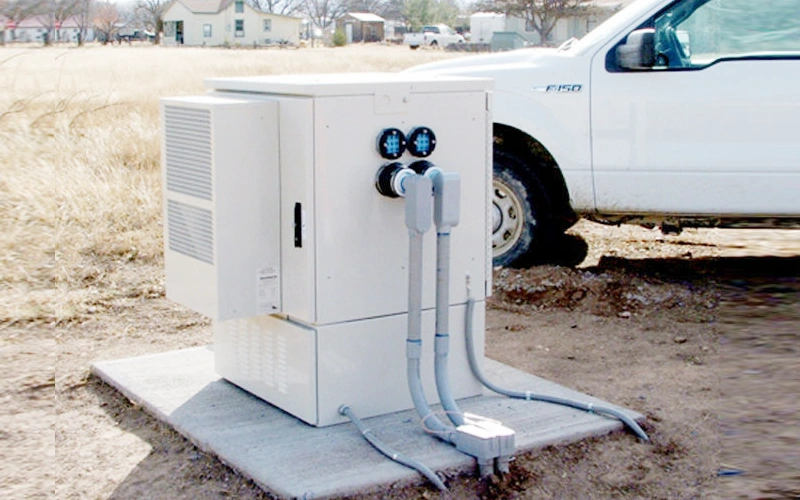
Applications in Control Panels
You probably use electricity every day without thinking about how it gets to your lights, outlets, or machines. That’s where secondary distribution systems come in. These systems take power that has already been stepped down from high voltages and deliver it safely to your building or equipment. You’ll find them everywhere—from homes and offices to factories and high-rise buildings.
Secondary distribution systems work at lower voltages, usually below 2,000 volts. This makes them perfect for powering everyday devices and equipment. Here’s a quick comparison to help you see how they differ from primary distribution:
| Aspect | Primary Distribution | Secondary Distribution |
|---|---|---|
| Voltage Level | High voltage, typically above 50,000 volts | Low voltage, typically below 2,000 volts |
| Purpose | Efficient long-distance transmission from generation to substations | Safe delivery to end users after voltage step-down |
| Infrastructure | Robust transmission networks and substations | Distribution transformers, metering, service drops near customers |
| Function | Transmit electricity over long distances | Deliver usable voltage to customers’ premises |
You’ll see secondary distribution systems in action in many places:
| Application Area | Typical Voltage Level | Common Usage | Secondary Distribution Configuration | Key Features and Purpose |
|---|---|---|---|---|
| Residential Areas | 120/240 V single-phase | Lighting, outlets, large appliances | Individual distribution transformers | Suitable for dispersed loads, common in rural areas |
| Urban High-Density | 208Y/120 V three-phase | Lighting, motor loads | Secondary networks or common secondary mains | High reliability, interconnected feeders, fault isolation |
| High-Rise Buildings / Industrial | 480Y/277 V three-phase | Heavy electrical equipment | Spot networks | High reliability, multiple feeders, large load handling |
You rely on these systems to keep your lights on, your computers running, and your machines working. In control panels, secondary distribution systems manage the final step of power delivery. They split the incoming power into different circuits, protect against overloads, and make sure each device gets the right amount of electricity.
One big advantage is that these systems need less maintenance than primary distribution. The network is simpler, so you don’t have to inspect it as often. You also save on capital costs because the equipment is smaller and easier to install.
Tip: When you design a new facility, think about your load size, reliability needs, and how easy it will be to maintain your system. Secondary distribution works best for buildings with smaller or less diverse loads.
Customization with Linkewell Products
Every building and project has unique needs. That’s why you want power distribution solutions that fit your exact requirements. Linkewell makes it easy to customize your electrical power distribution box, control panel, or rack cable management system for secondary distribution systems.
Here’s how Linkewell’s customization options help you:
| Customization Option | Description | How It Addresses Customer Requirements |
|---|---|---|
| Number of Poles and Pole Configuration | You can specify the exact number and arrangement of connection points, including isolated or commoned poles, and groupings for multi-phase or complex systems. | This lets you match your circuits or devices perfectly, saving space and improving function. |
| Current and Voltage Rating | Linkewell tailors contact materials, insulation, and design to handle your specified amperage and voltage safely and reliably. | This keeps your system safe and reliable, preventing overheating or insulation failure. |
| Integrated Functionalities (Shorting Links, Test Sockets) | You get built-in shorting links for safe CT secondary shorting and test sockets for easy, secure testing connections. | This makes testing and diagnostics safer and more convenient, so you don’t have to interrupt your circuits. |
| Mounting Type and Enclosure Compatibility | Choose from DIN rail, panel, or PCB mounting, all compatible with different enclosures and protective covers. | This ensures your system fits your space and meets your environmental protection needs. |
You can also request special features for your environment. For example, if you run a telecom base station in a cold area, Linkewell can add cabinet heaters to keep your equipment stable. If you manage a data center, you might need solutions that prevent condensation and protect sensitive servers. Linkewell tests all products for reliability, so you get solutions that last.
Rack cable management is another area where customization pays off. With Linkewell’s cable management solutions, you get:
- Easy access to cables, so you spend less time untangling and more time working.
- Safer workplaces, since organized cables reduce the risk of sparks, fires, and tripping.
- Faster troubleshooting, because you can quickly identify and fix problems.
- Better protection for your devices, as cables won’t get bent or crushed.
- Improved airflow in racks, which helps prevent overheating.
Note: Linkewell supports you with global service centers and fast technical support. You can count on expert help and quick responses, no matter where your project is located.
When you choose Linkewell, you get more than just a product. You get a partner who helps you design, build, and maintain a safe, efficient, and reliable secondary distribution system tailored to your needs.
Choosing the right power distribution system matters. Radial systems keep things simple, while network and composite systems boost reliability. Primary and secondary setups serve different voltage needs. Linkewell’s electrical power distribution boxes, control panels, and rack cable management help you stay safe and efficient.
When you plan your setup, think about future growth, energy efficiency, and regular maintenance.
- Modular solutions and expert support from Linkewell make it easy to match your application and environment.
- Many customers trust Linkewell for custom designs, fast delivery, and seamless integration.
You can always reach out for advice and a solution built just for you.
FAQ
What’s the difference between a power distribution box and a control panel?
A power distribution box splits power into circuits and protects them. A control panel manages and automates power flow for machines or systems. You’ll often use both together for safe, efficient operations.
How do I choose the right power distribution solution for my project?
Start by listing your voltage, current, and reliability needs. Think about your environment—indoor or outdoor, dusty or clean. Linkewell’s team can help you match the right box or panel to your application.
Can I customize Linkewell’s products for unique requirements?
Absolutely! You can request custom sizes, layouts, materials, and features. Linkewell offers tailored solutions for telecom, industrial, and data center projects. Just share your specs, and you’ll get a perfect fit.
Are Linkewell’s products certified for international use?
Yes! Linkewell’s electrical power distribution boxes and control panels meet IEC 61439, UL 508A, and other global standards. You can use them in projects worldwide with confidence.
Conclusion
Choosing the right Power Distribution Solutions—radial, network, primary, or secondary—is essential for safe, efficient energy flow.
Linkewell offers certified, customizable power distribution boxes, control panels, and cable management tools to suit diverse environments and applications. With support for harsh conditions, modular design, and expert service, Linkewell helps reduce downtime, improve safety, and future-proof your power systems—whether you’re managing a small cabinet or a complex network.

